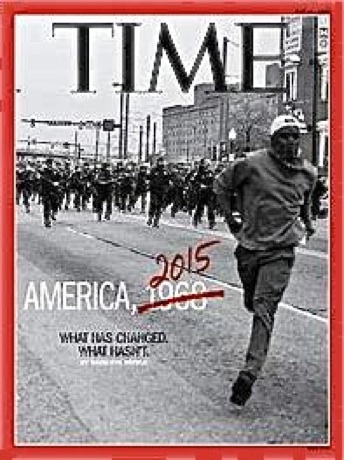“Racism”
This is the question of the week. Which English word is most often misused in this country?

Without question, the answer is racist or racism.
Before discussing that word, however, there has to be an understanding of its meaning. A racist is defined as a person who is prejudiced against or antagonistic toward people on the basis of their membership in a particular racial or ethnic group, typically one that is a minority or marginalized.
The oldest and most pernicious form of racism is anti-Semitism. For some unknown or unexplainable reason, that gross philosophy has waxed and waned for centuries in most countries of the world. Unfortunately, this country is no exception.
This racism resulted in the death of approximately six million Jews in Europe between 1939 and 1945. And some even claim that the creation of Israel in reaction to the Holocaust was racist. It was creating a country to which “those people” could be sent.
Anti-Semitism, however, is at the bottom of the list for targets of racism in this country. Racial minorities of all types, particularly Blacks and Hispanics, are now the most common victims.
Although Blacks have been the largest and longest lasting category of racists’ targets, shortly after the War Between the States, Asians were subjected to severe discrimination.
So-called Coolie Laborers were imported from China to build railroads under almost slave like conditions. Then in 1862, California enacted its Anti-Coolie Act that levied a monthly tax on Chinese immigrants doing business in the state.
The same year, the Federal Chinese Exclusion Act of 1882 prohibited immigration of Chinese laborers. This law was not repealed until 1943.
This very brief history of recent targets of racism in this country as well as in the rest of the world is just to set the stage for the misuse of the word racist.
The integration of the U.S. armed forces under President Harry Truman in 1948 and the desegregation of public schools beginning in the 1960s began a gradual reduction of overt racism in the country.
Unfortunately, that improvement began to slow with the turn of the century. In my opinion, it took a precipitous drop under President Obama.
Whoops!, I just criticized a Black man: that males me a racist. And that is why racist is the most misused English word in America today.
A Caucasian cannot utter a single critical word about a so-called minority without being called a racist. Without regard to its validity, if the comment is critical, the speaker is a racist.
To be honest, there are some Black people that I do not like for various reason. There are, however, a lot more Caucasians that I dislike for the same or other reasons.
Does this mean that I can express my feelings about the Caucasians without fear of repercussions but have to live under a banner of shame if I make the same remarks about a Black?
A better example may be our President. He is an equal rights employer when it comes to zingers. Criticize or irritate him in any way, and you will be hung out to dry.
Right or wrong, he has taken many more Caucasians than minorities to the woodshed. If the target of his arrows is a Caucasian, there may be some clicking of tongues. If, however, the target is a Black or Hispanic, there are cries of, “Racist! Racist!.”
Even if he is responding to an egregious false claim, he is accused of racism if he responds angrily to his attacker.
So here’s the perspective.
Racism and racists are inexcusable. Neither can be tolerated.
However, calling someone a racist without actual proof of racism is as bad as the racism itself.
Let’s become civil and be able to discuss what we like or do not like about individuals without regard to their race and without fear of being labeled racist if critical of someone of another race.
enough





